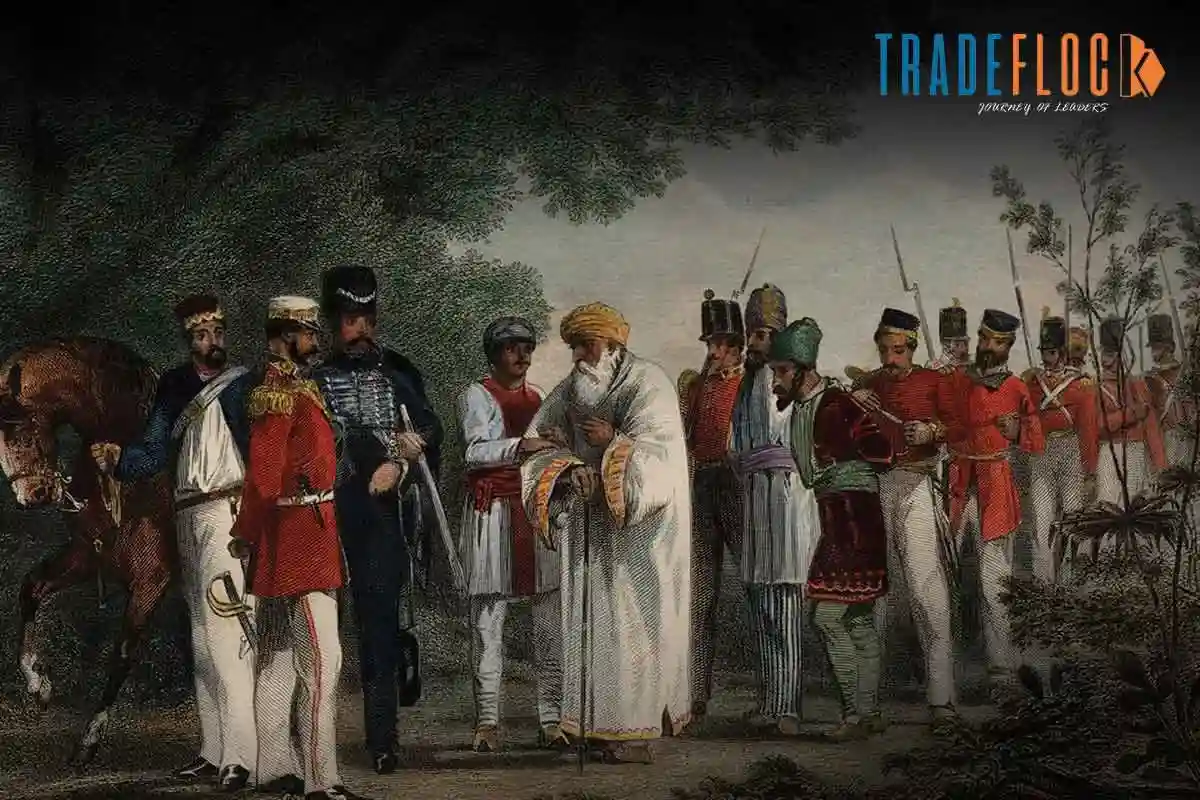September 21, 1857, marks the end of the Mughal Empire in India. On this day, Bahadur Shah Zafar, the last Mughal Emperor, surrendered to Major Willaim Hadson of the British East India Company’s army. The event signalled the collapse of a dynasty that had ruled India for over three centuries and heralded a new era of British dominance in the subcontinent.
The Background
The Mughal Empire, founded by Babur in 1526, had seen its zenith under emperors like Akbar, Jahangir, and Shah Jahan. However, the empire had significantly weakened by the time Bahadur Shah Zafar ascended the throne in 1837. The British East India Company had already established its dominance over large parts of India, reducing the Mughal Emperor to a mere figurehead confined to the Red Fort in Delhi.
The Revolt of 1857, also known as the First War of Indian Independence, was a major but ultimately unsuccessful uprising against the British East India Company’s rule. The rebellion began in Meerut on May 10, 1857, and quickly spread to other parts of Northern and Central India. The sepoys (Indian soldiers in the British army) and various Indian rulers rallied around Bahadur Shah Zafar, proclaiming him the Emperor of India in a symbolic gesture of unity against the British.
Key Figures and Events
Bahadur Shah Zafar: Born in 1775, Bahadur Shah Zafar was the last Mughal Emperor. A poet and a mystic, he was more interested in arts and culture than in governance. Despite his reluctance, he became the figurehead of the 1857 rebellion, as the rebels saw him as a unifying symbol against British rule.
Major William Hodson: An officer in the British East India Company’s Army, Major Hodson played a crucial role in suppressing the 1857 rebellion. Known for his ruthlessness, Hodson captured Bahadur Shah Zafar and his sons, effectively ending the Mughal dynasty.
The Siege of Delhi: One of the most significant events of the 1857 rebellion was the Siege of Delhi. The city became the focal point of the uprising, with rebels controlling it from May to September 1857. The British forces, led by General John Nicholson, launched a fierce assault on Delhi, culminating in the capture of the city on September 20, 1857. The next day, Bahadur Shah Zafar surrendered at Humayun’s Tomb, marking the end of the Mughal Empire.
The Socio-Economic Impact
The fall of the Mughal empire had profound socio-economic implications for India. The British East India Company took direct control of Delhi and other territories, establishing the British Raj in 1858. The traditional Mughal administrative and revenue systems were replaced with British ones, which had far-reaching effects on Indian society and economy. The British introduced new land revenue policies, such as the Permanent Settlement and the Ryotwari System, which disrupted traditional agrarian structures and led to widespread peasant unrest. The decline of Mughal patronage also affected artisans and craftsmen, leading to the decline of traditional industries like textiles and handicrafts.
Globally, the end of the Mughal Empire and the establishment of British rule in India had significant repercussions. India became a crucial part of the British Empire, serving as a major source of raw materials and a market for British goods. This integration into the global economy affected India both positively and negatively. While it led to the development of infrastructure like railways and telegraphs, it also resulted in the deindustrialisation of traditional Indian industries and increased economic dependency on Britain.
The fall of the Mughal Empire also had a lasting cultural impact. The Mughal court had been a centre of cultural and artistic patronage, and its decline led to the dispersal of artists, poets, and musicians. However, the rich cultural legacy of the Mughals continued to influence Indian art, architecture, and literature.
The surrender of Bahadur Shah Zafar on September 21, 1857, symbolises the end of an era in Indian history. The fall of the Mughal Empire and the subsequent establishment of British rule had profound socio-economic and cultural impacts on India and the world. While the Mughal dynasty ended, its legacy continues to shape India’s cultural and historical landscape. The events of 1857 serve as a reminder of the complex and often tumultuous history of the subcontinent, highlighting the resilience and enduring spirit of its people.





